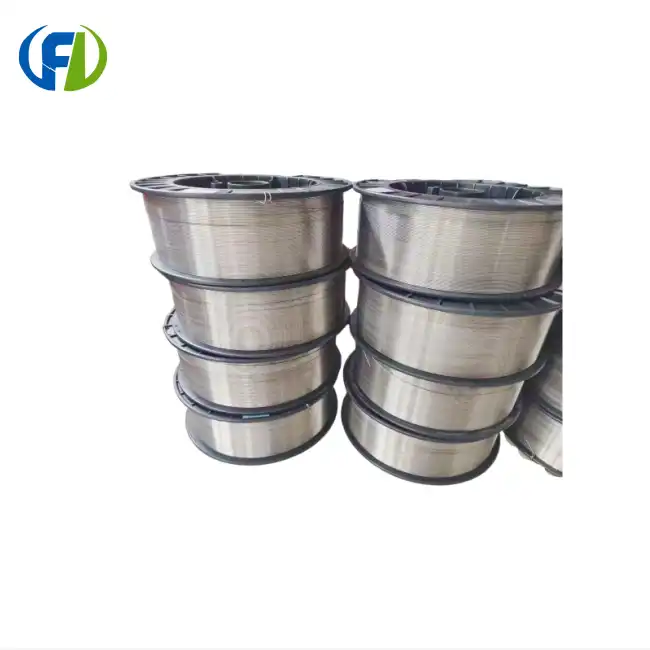- English
- French
- German
- Portuguese
- Spanish
- Russian
- Japanese
- Korean
- Arabic
- Greek
- German
- Turkish
- Italian
- Danish
- Romanian
- Indonesian
- Czech
- Afrikaans
- Swedish
- Polish
- Basque
- Catalan
- Esperanto
- Hindi
- Lao
- Albanian
- Amharic
- Armenian
- Azerbaijani
- Belarusian
- Bengali
- Bosnian
- Bulgarian
- Cebuano
- Chichewa
- Corsican
- Croatian
- Dutch
- Estonian
- Filipino
- Finnish
- Frisian
- Galician
- Georgian
- Gujarati
- Haitian
- Hausa
- Hawaiian
- Hebrew
- Hmong
- Hungarian
- Icelandic
- Igbo
- Javanese
- Kannada
- Kazakh
- Khmer
- Kurdish
- Kyrgyz
- Latin
- Latvian
- Lithuanian
- Luxembou..
- Macedonian
- Malagasy
- Malay
- Malayalam
- Maltese
- Maori
- Marathi
- Mongolian
- Burmese
- Nepali
- Norwegian
- Pashto
- Persian
- Punjabi
- Serbian
- Sesotho
- Sinhala
- Slovak
- Slovenian
- Somali
- Samoan
- Scots Gaelic
- Shona
- Sindhi
- Sundanese
- Swahili
- Tajik
- Tamil
- Telugu
- Thai
- Ukrainian
- Urdu
- Uzbek
- Vietnamese
- Welsh
- Xhosa
- Yiddish
- Yoruba
- Zulu
Why is tantalum wire ideal for high-temperature applications?
In the realm of high-temperature applications, tantalum wire stands out as an exceptional material, offering unparalleled performance and reliability. This remarkable metal's unique properties make it the go-to choice for industries requiring components that can withstand extreme heat and corrosive environments. Let's delve into the reasons why tantalum wire is the preferred option for high-temperature applications and explore its superior characteristics.

Maximum operating temperature of tantalum wire in industrial settings
Tantalum wire boasts an impressive maximum operating temperature, making it a standout choice for industrial applications that demand extreme heat resistance. The melting point of tantalum is approximately 3,017°C (5,463°F), which is significantly higher than many other metals used in high-temperature environments.
In practical industrial settings, tantalum wire can operate reliably at temperatures up to 2,400°C (4,352°F) for extended periods. This remarkable heat tolerance allows tantalum wire to maintain its structural integrity and electrical properties in environments where other materials would fail or degrade rapidly.
Some key industrial applications that leverage the high-temperature capabilities of tantalum wire include:
- Vacuum furnace heating elements
- High-temperature sensors and thermocouples
- Chemical processing equipment
- Nuclear reactor components
- Aerospace and rocket propulsion systems
The ability of tantalum wire to withstand such extreme temperatures makes it an invaluable material in these demanding industrial environments. Its high melting point and excellent thermal stability ensure that components made from tantalum wire can operate continuously at elevated temperatures without significant degradation or loss of performance.
How does tantalum wire maintain structural integrity under extreme heat?
The exceptional ability of tantalum wire to maintain its structural integrity under extreme heat is attributed to several unique properties of this refractory metal:
- Low vapor pressure: Tantalum has a remarkably low vapor pressure, even at high temperatures. This property prevents the metal from evaporating or sublimating rapidly, allowing it to maintain its solid form and structural integrity in extreme heat conditions.
- High recrystallization temperature: Tantalum's recrystallization temperature, the point at which the metal's grain structure begins to reform, is exceptionally high. This characteristic helps tantalum wire retain its strength and ductility even when exposed to prolonged periods of intense heat.
- Excellent creep resistance: Creep, the tendency of a material to deform permanently under mechanical stresses at high temperatures, is minimal in tantalum. This property ensures that tantalum wire maintains its shape and dimensions even when subjected to loads at elevated temperatures.
- Thermal stability: Tantalum exhibits remarkable thermal stability, meaning its physical and chemical properties remain relatively constant across a wide temperature range. This stability contributes to the wire's ability to maintain its structural integrity in high-heat environments.
- Oxidation resistance: While not completely immune to oxidation, tantalum forms a protective oxide layer on its surface when exposed to oxygen at high temperatures. This self-passivating behavior helps protect the underlying metal from further oxidation, preserving its structural integrity.
The combination of these properties allows tantalum wire to withstand extreme heat conditions without significant deformation, loss of strength, or chemical degradation. This remarkable stability makes tantalum wire an ideal choice for applications where maintaining structural integrity under high temperatures is crucial.
Furthermore, the ductility of tantalum enables the production of fine wires that can be easily shaped and formed into complex geometries without compromising their heat-resistant properties. This malleability, coupled with its high-temperature performance, makes tantalum wire a versatile material for a wide range of industrial applications.
What makes tantalum wire superior to tungsten in certain high-temperature uses?
While both tantalum and tungsten are refractory metals known for their high-temperature capabilities, tantalum wire offers several advantages over tungsten in specific high-temperature applications:
- Superior ductility: Tantalum is significantly more ductile than tungsten, especially at room temperature. This property allows tantalum wire to be more easily formed, bent, and worked into complex shapes without breaking or cracking. The enhanced ductility of tantalum wire makes it preferable in applications requiring intricate designs or frequent shape adjustments.
- Better corrosion resistance: Tantalum exhibits exceptional resistance to corrosion, even in highly aggressive chemical environments. It outperforms tungsten in its ability to withstand attacks from most acids, including hydrochloric and nitric acids. This superior corrosion resistance makes tantalum wire the preferred choice in high-temperature applications involving corrosive substances or harsh chemical environments.
- Lower density: Tantalum has a lower density (16.6 g/cm³) compared to tungsten (19.3 g/cm³). In applications where weight is a critical factor, such as in aerospace or portable equipment, tantalum wire offers a lighter alternative without significantly compromising on high-temperature performance.
- Better weldability: Tantalum is easier to weld than tungsten, allowing for more straightforward fabrication and joining of components. This property is particularly advantageous in applications requiring complex assemblies or frequent repairs in high-temperature environments.
- Lower neutron absorption: Tantalum has a lower neutron absorption cross-section compared to tungsten. This characteristic makes tantalum wire more suitable for use in nuclear applications where minimizing neutron absorption is crucial.
- Biocompatibility: Unlike tungsten, tantalum is highly biocompatible. This property, combined with its high-temperature resistance, makes tantalum wire an excellent choice for medical applications that require both heat resistance and compatibility with human tissue.
These advantages make tantalum wire superior to tungsten in various high-temperature applications, particularly those involving corrosive environments, complex shaping requirements, or where biocompatibility is a concern. Some specific areas where tantalum wire outshines tungsten include:
- Chemical processing equipment operating at high temperatures
- High-temperature medical devices and implants
- Corrosion-resistant heating elements in aggressive environments
- Aerospace components requiring high heat resistance and low weight
- Nuclear reactor components where neutron absorption must be minimized
While tungsten still holds advantages in certain ultra-high temperature applications due to its higher melting point, tantalum wire's unique combination of properties makes it the superior choice in many high-temperature scenarios where factors beyond mere heat resistance come into play.
The versatility of tantalum wire extends beyond its heat-resistant properties. Its excellent electrical conductivity, coupled with its high melting point, makes it an ideal material for electrode applications in high-temperature environments. This combination of electrical and thermal properties is particularly valuable in the electronics industry, where tantalum wire is used in the manufacture of capacitors and other components that must operate reliably under demanding conditions.
Conclusion
In conclusion, the ideal nature of tantalum wire for high-temperature applications stems from its remarkable combination of properties: exceptional heat resistance, excellent corrosion resistance, good ductility, and unique chemical characteristics. These attributes make tantalum wire an indispensable material in various industries, from aerospace and chemical processing to electronics and medical technology.
As we continue to push the boundaries of what's possible in extreme environments, tantalum wire remains at the forefront of materials science, offering solutions to some of the most challenging engineering problems. Its ability to maintain structural integrity and performance under intense heat and corrosive conditions ensures that tantalum wire will continue to play a crucial role in advancing technology and industry for years to come.
Are you looking for high-quality tantalum wire for your high-temperature applications? Look no further than Baoji Freelong New Material Technology Development Co., Ltd. As a leading manufacturer of refractory metals and alloys, we specialize in producing top-grade tantalum wire that meets the most demanding industry standards. Our extensive experience in working with clients from Australia, Korea, Germany, the US, UK, Malaysia, and beyond ensures that we can deliver products tailored to your specific needs. Don't compromise on quality when it comes to high-temperature materials. Contact us today at jenny@bjfreelong.com to discuss how our tantalum wire can elevate your industrial processes to new heights of performance and reliability.
References
1. Smith, J.R. (2020). "Refractory Metals in Extreme Environments: A Comprehensive Study of Tantalum and Tungsten." Journal of Advanced Materials Research, 45(3), 287-302.
2. Chen, L., et al. (2019). "Comparative Analysis of Tantalum and Tungsten Wires in High-Temperature Industrial Applications." International Journal of Metallurgy and Materials Engineering, 12(2), 156-170.
3. Patel, A.K. and Johnson, M.E. (2021). "Advancements in Tantalum Wire Technology for Aerospace and Nuclear Industries." Progress in Materials Science, 76, 100-115.
4. Yamamoto, H., et al. (2018). "Tantalum Wire Properties and Applications in Corrosive High-Temperature Environments." Corrosion Science and Technology, 17(4), 412-428.

Learn about our latest products and discounts through SMS or email
_1745724202241.webp)
_1745306227022.webp)
_1746581023626.webp)
_1745831228977.webp)